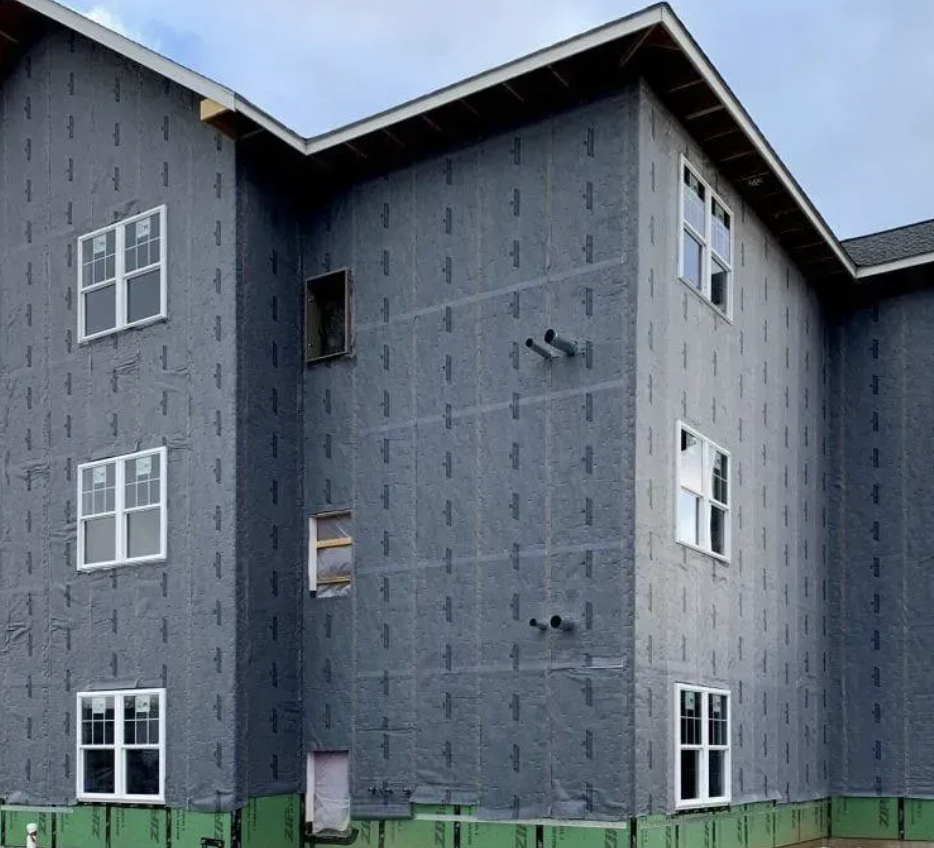Posted by Spycor Building on May 5th 2025

Moisture is one of the leading causes of structural damage in both residential and commercial buildings. From mold growth to foundation deterioration, water infiltration can create long-term problems that are expensive to repair. Fortunately, modern construction practices have evolved to combat this issue—one of the most effective solutions being the rainscreen system.
In this article, we’ll explore how rainscreens prevent moisture damage, their benefits for homes and buildings, and how to choose the best rainscreen solution for your specific needs. Whether you’re a contractor, architect, or homeowner, understanding this innovative technology can save you thousands of dollars and extend the life of your structure.
What Is a Rainscreen System?
A rainscreen system is an exterior wall detail designed to create a physical barrier and a ventilated cavity that allows moisture to escape. Unlike traditional siding, rainscreens are installed with a gap between the cladding and the water-resistant barrier, allowing for drainage and air circulation.
Benefits of Rainscreens in Residential
Construction

In modern home construction, the rainscreen system has become a critical component for protecting buildings from long-term water damage. Used in both new builds and renovations, a properly installed rainscreen wall system offers a wide range of performance and design benefits—especially in areas prone to heavy rainfall or high humidity.
Prevents Mold and Mildew
By creating a ventilated air gap behind the rainscreen cladding, moisture that penetrates the outer layer is allowed to drain and evaporate instead of becoming trapped within the wall assembly. This process significantly reduces the conditions that lead to mold, mildew, and deterioration of internal structures. For homeowners researching “how does a rainscreen work,” this feature is often one of the most compelling.
Increases Home Durability
A ventilated rainscreen not only shields homes from wind-driven rain but also prevents water from sitting on or behind siding materials. This reduces the risk of wood rot and long-term structural issues, especially in wood-framed buildings. Over time, this protection enhances the durability of the home, making it a valuable long-term investment—especially when using products like affordable rainscreen systems for builders.
Improves Energy Efficiency
When paired with exterior insulation and a weather-resistant barrier (WRB), a rainscreen system helps regulate temperature by preventing thermal bridging and keeping walls dry. Dry insulation performs better, leading to lower heating and cooling costs and greater year-round comfort. Many homeowners looking to increase efficiency while maintaining an attractive facade often search for rainscreen cladding installation guides or best rainscreen systems for wood siding.
Enhances Aesthetics
The air gap provided by the rainscreen system allows for more flexibility in cladding choices—ranging from modern metal panels to traditional wood siding. This makes it easier to achieve a specific design aesthetic without compromising performance. Searches such as “rainscreen siding” and “top rainscreen mats for stucco” are becoming more common as homeowners explore options that blend beauty and function.
Benefits of Rainscreens in Commercial
Buildings

In commercial construction, incorporating a rainscreen system is an essential strategy for improving building durability, energy efficiency, and sustainability. Whether it’s an office complex, healthcare facility, or retail center, a properly installed ventilated rainscreen can have a lasting impact on performance, cost savings, and environmental compliance.
Reduces Maintenance Costs
One of the biggest advantages of a rainscreen wall system is its ability to protect the building envelope from moisture intrusion. By allowing rainwater to drain and air to circulate behind the rainscreen cladding, the system prevents water from seeping into structural components. This reduces water-related damage and repair needs over time, resulting in lower maintenance costs for property owners and facility managers. Many architects searching for best rainscreen systems factor in long-term maintenance ROI.
Supports High-Performance Building Envelopes
Modern commercial buildings demand superior thermal performance. When combined with high-quality insulation and an integrated weather-resistant barrier (WRB), a rainscreen system contributes to a well-sealed, energy-efficient envelope. This is especially important for builders and engineers seeking rainscreen systems for commercial buildings that meet modern air and moisture control standards.
Boosts Longevity of Exterior Finishes
Buildings with metal panels, fiber cement, or composite cladding benefit greatly from a rainscreen cladding approach. The air gap behind the panels reduces the risk of moisture accumulation, which can lead to corrosion, staining, or finish failure. As a result, the building maintains its appearance longer—an important consideration for owners looking for top rainscreen mats for stucco or rainscreen systems for fiber cement panels.
Compliance with Green Building Standards
The use of a rainscreen system supports sustainable building practices and helps meet certifications like LEED, WELL, and other green construction benchmarks. By improving the durability of the building and supporting energy performance, rainscreen wall systems are often recommended in designs pursuing compliance with green building standards. Searches like “difference between rainscreen and WRB” or “how does a rainscreen work” often come up during the planning stages of eco-conscious projects.
Moisture damage can quietly devastate a building’s structure and value. Fortunately, rainscreen wall systems offer an intelligent, high-performance way to combat water infiltration while enhancing the aesthetics and efficiency of buildings. Whether you're designing a home or managing a commercial project, investing in a quality rainscreen is a smart move.
Visit SpycorBuilding.com today to explore our full line of rainscreen systems and moisture management products.
CLICK HERE to choose the best rainscreen based on your building type, climate, and budget.



